Direct current (“DC”) output is the preferred power source for most welding operations. But, alternating current (“AC”) plays a crucial role in the TIG welding process when welding aluminum and similar metals.
Welding current and polarities are often confusing for beginners. But, some experienced welders also don’t fully understand electric current either because there are many nuances to consider.
This article will teach you what AC and DC currents are, their differences in welding, and which one is better suited for various applications.
AC vs. DC Welding Differences Summarized
We created the chart below as a quick reference to help you visualize the differences between AC and DC welding.
Read on to learn the differences more in-depth.
| AC | DC | |
|---|---|---|
| Weld Spatter | More | Less |
| Arc Stability | Worse | Better |
| Filler Metal Deposition Rates | Moderate | High |
| Penetration | Moderate | High |
| Voltage Drops Using Long Leads | No | Yes |
| Arc Blow Occurs When Welding Magnetized Metal | No | Yes |
| Welds Ferrous Metal Like Steel | SMAW only | All arc welding processes |
| Welds Aluminum | AC TIG | DC MIG |
| TIG Welding Equipment Cost | High | Low |
| Stick Welding Equipment Cost | Low | Medium to High |
What is DC in Welding?
DC stands for direct current, and it flows in one direction. Since the electric circuit must be continuous for electricity to flow, we use a ground clamp and an electrode holder or a TIG/MIG torch to complete the circuit. The arc jumps between the electrode and the metal with the ground clamp attached, completing the electrical circuit.
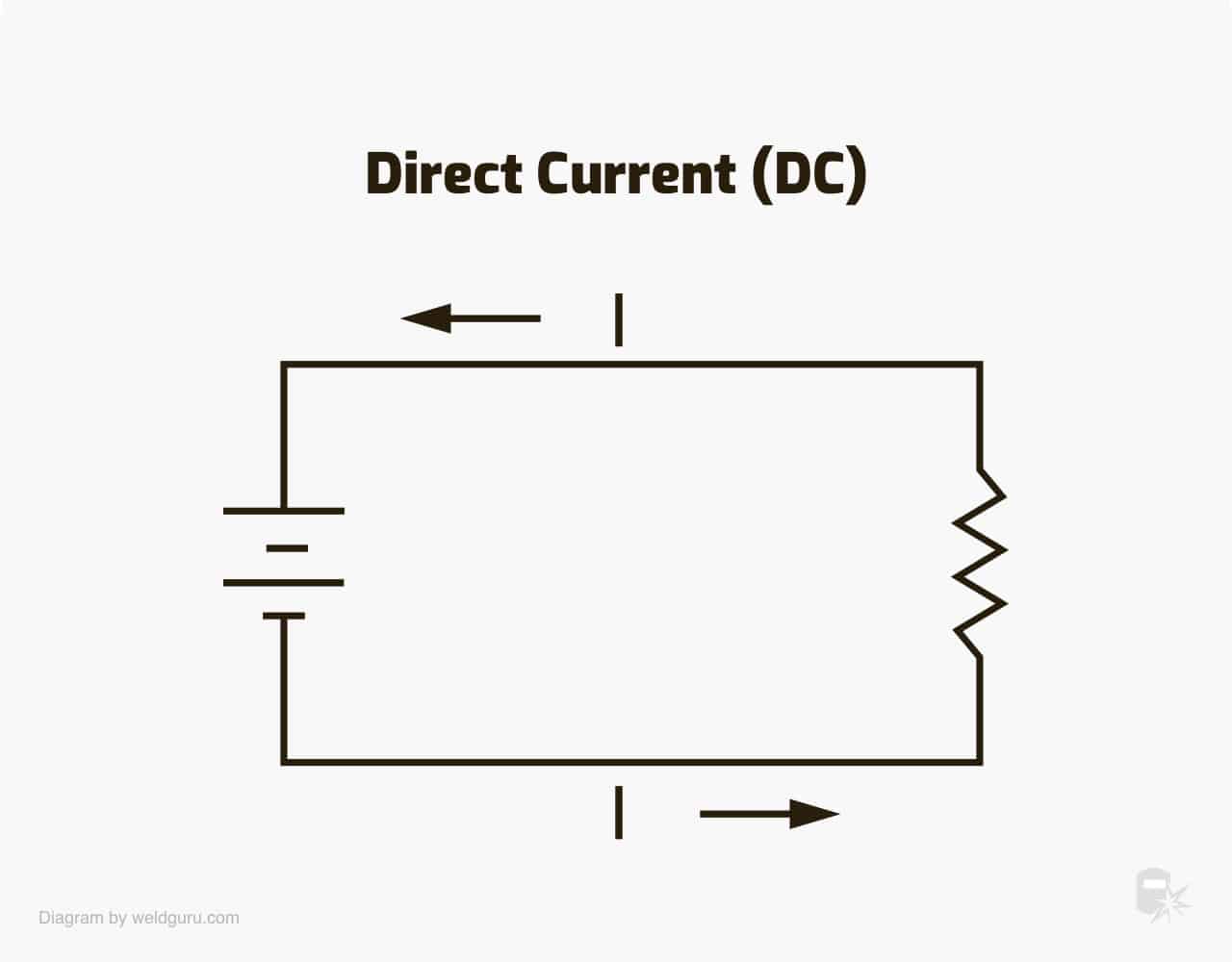
© weldguru.com – Image usage rights
The electrode and the metal heat up to the melting point thanks to the metal’s electrical resistance. But, choosing the wrong polarity reduces the weld quality drastically.
So, your ground clamp and electrode must be correctly connected to the power source (welding machine). Each welding process requires specific polarity depending on the welded metal and electrode selection.
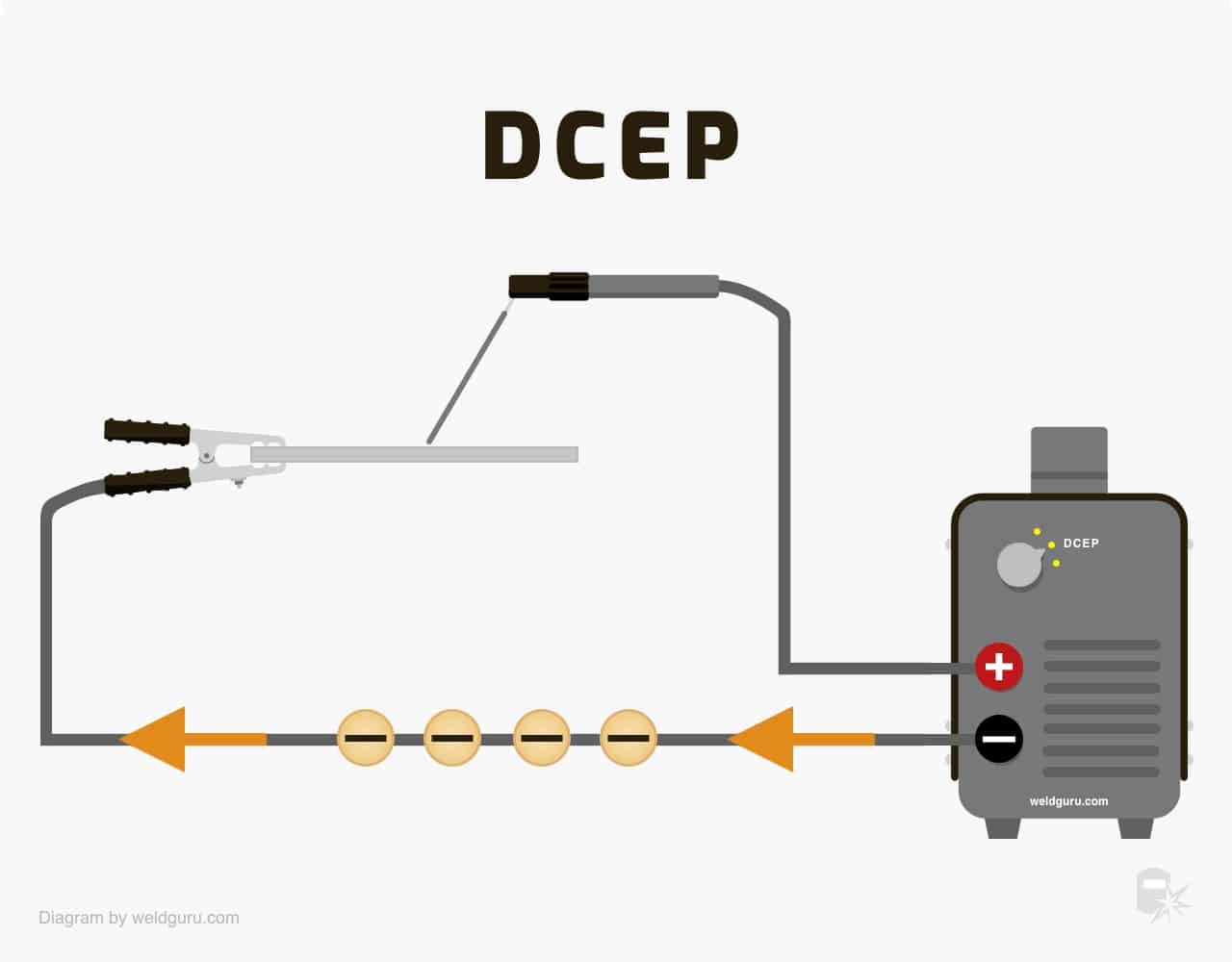
© weldguru.com – Image usage rights
Direct current electrode positive (“DCEP”) – The ground clamp is negative while the electrode is positive. The electrode receives about 70% of the heat and the work 30%.
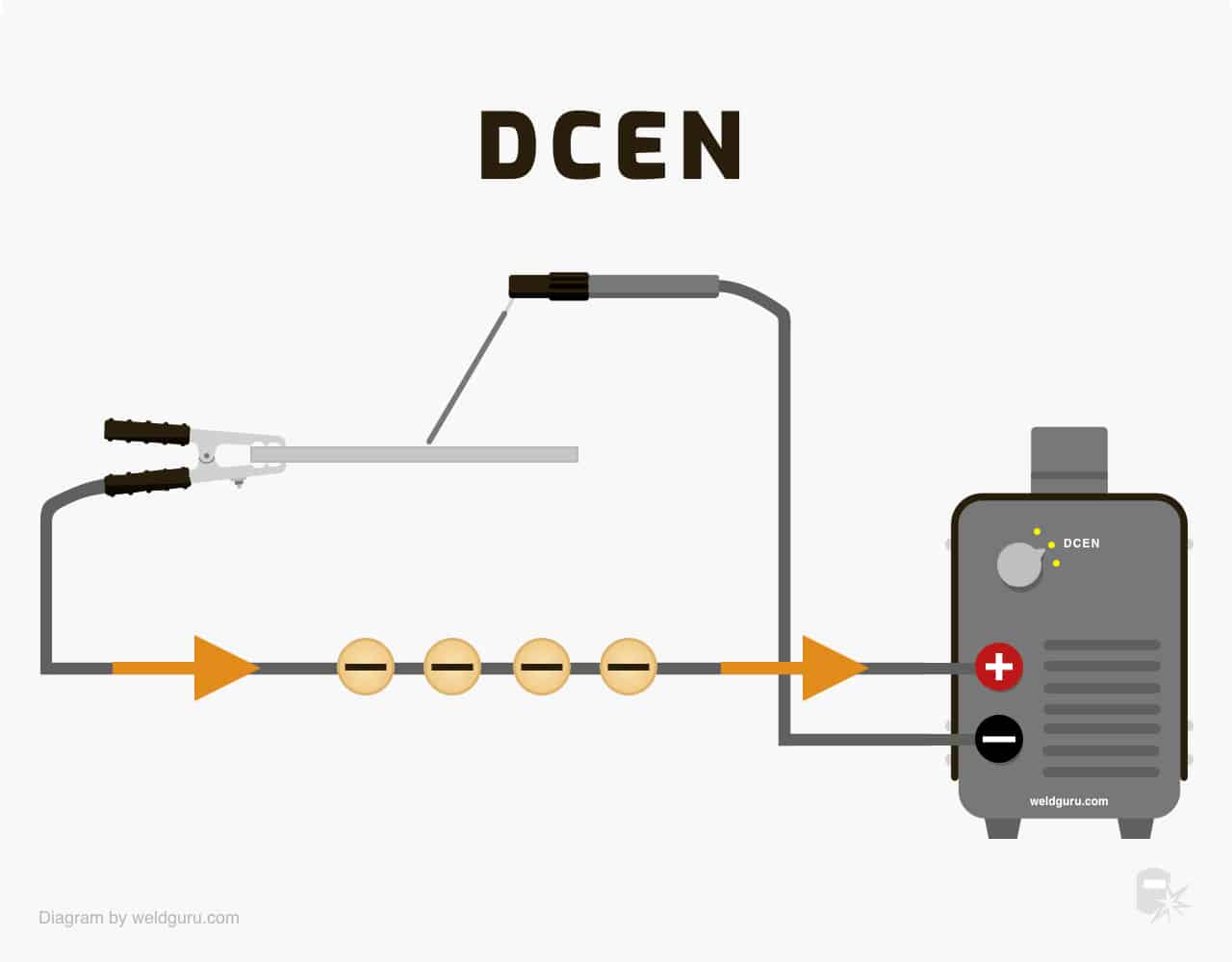
© weldguru.com – Image usage rights
Direct current electrode negative (“DCEN”) – The ground clamp is positive while the electrode is negative. The electrode receives about 30% of the heat and the work 70%.
The electrons always flow from the negative to the positive pole. For example, if the electrode is positive, the electrons flow from the workpiece to the electrode, and vice-versa if the electrode is negative.
You might think the DCEN is the preferable polarity for welding since the heat is concentrated on the workpiece. That must be good for penetration.
Right?
Well, this is true, but not always. We will explain the required polarity later in the article and why stick welding requires the opposite polarity to TIG welding.
What is AC in Welding?
Alternating current switches the current direction back and forth many times a second. Standard US home outlets provide 110-120V AC power with a 60Hz frequency, while European nations use 220-240V with a 50Hz frequency.
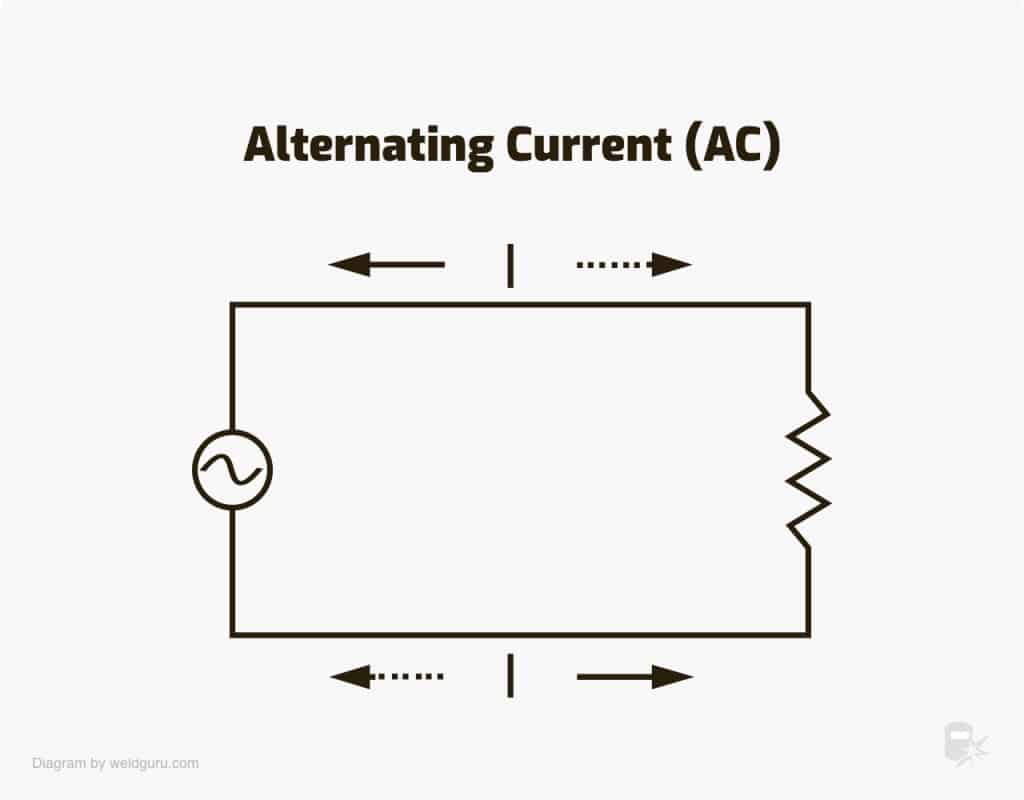
© weldguru.com – Image usage rights
So, your available power reverses polarity 50-60 times per second. The same holds when welding with an AC output power source. The electrode holder/MIG/TIG torch and the ground clamp will switch polarity many times per second.
However, don’t confuse the AC input and the welding machine output frequencies. While older devices could only provide the output frequency from the wall outlet (input frequency), newer welders allow you to modify the output frequency. Some machines can output up to 500Hz!
The Differences Between AC & DC Welding
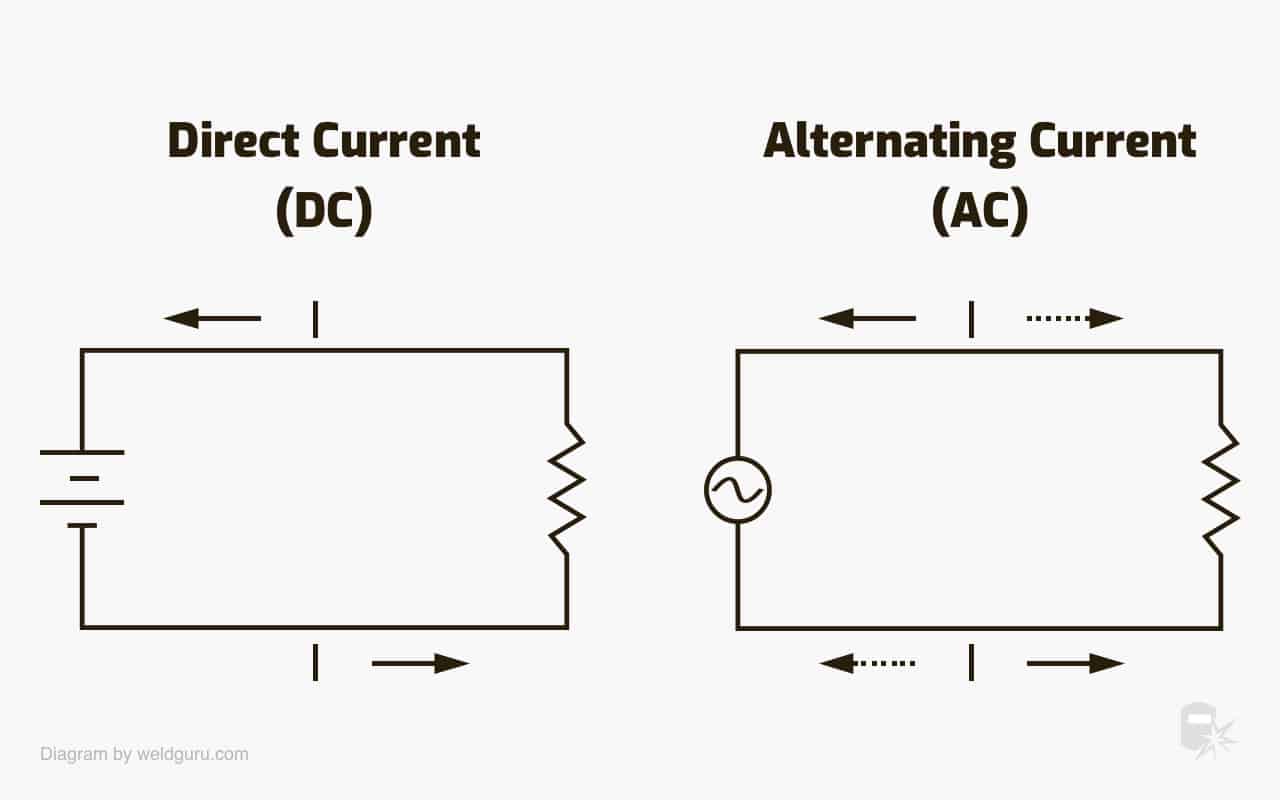
© weldguru.com – Image usage rights
The essential difference is obvious. An AC output switches the polarity, and the current constantly flows back and forth, while the DC output keeps the polarity uniform, and the current flows in one direction.
For most welding jobs, AC is undesirable. The arc is extinguished and reignited every time the polarity switches. As a result, AC causes arc instability when stick welding and does not benefit MIG or FCAW welding processes.
Let’s break down the differences between AC and DC welding by process…
AC vs. DC Stick Welding (SMAW)
The first stick welders, also called buzz boxes, were AC output machines. The polarity-switching action caused the device to sound like a bumblebee — hence the buzz box name.
While these AC welders got the job done, the arc wasn’t nearly as stable as DC output power sources. So, stick welding is primarily performed with DC machines.
However, the polarity choice plays a crucial role in achieving quality SMAW welds. DCEP provides the best penetration, even if the electricity is focused on the stick welding electrode.
That sounds counterintuitive, I know. But try to visualize the following…
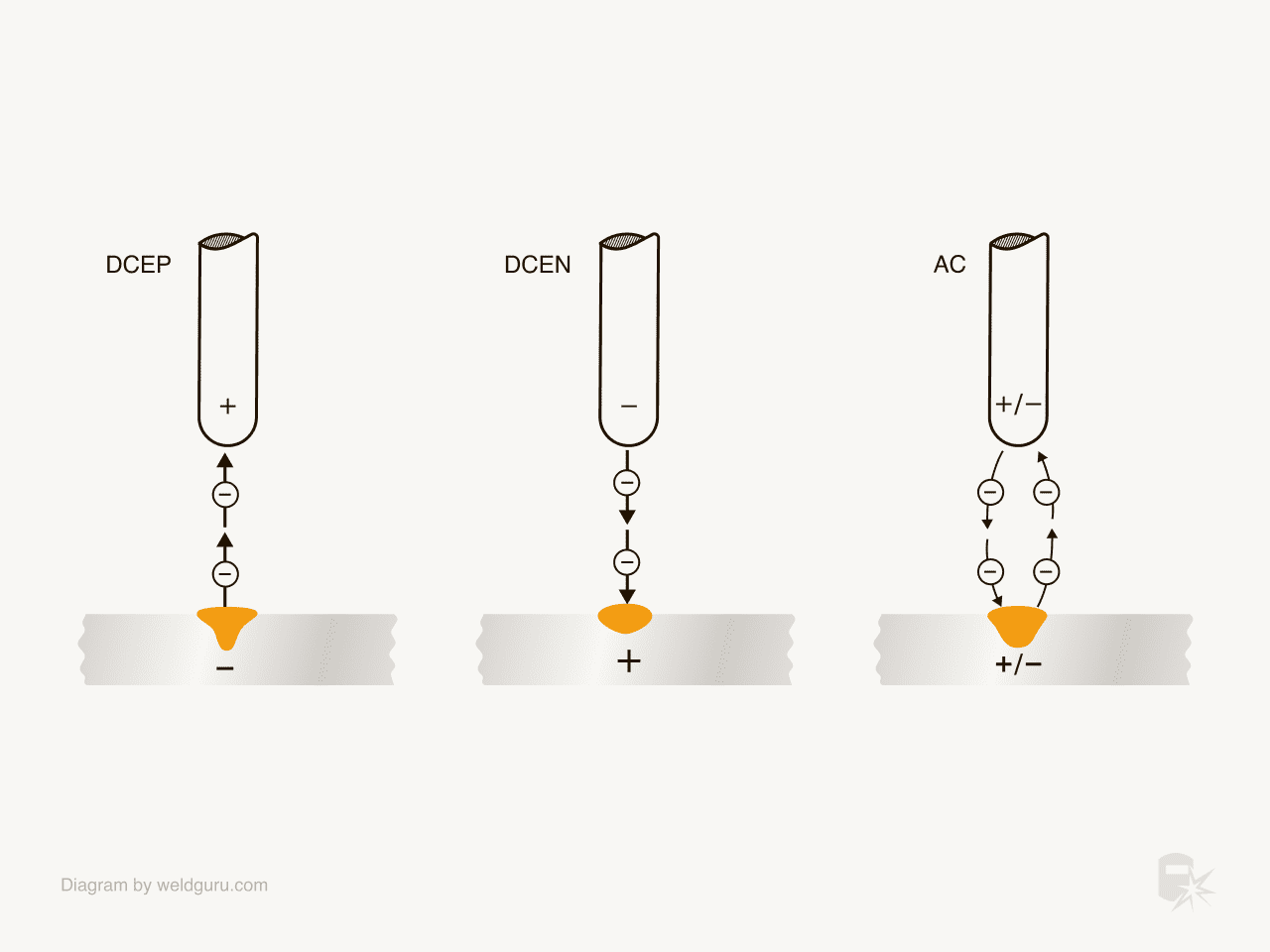
© weldguru.com – Image usage rights
The heat is concentrated on the electrode causing it to melt, and the liquid droplet at the rod’s tip is propelled into the welded metal, shooting it deep into the weld joint.
So, DCEP is the most commonly used polarity when stick welding. However, DCEN also has its uses. For example, you don’t need maximum penetration when welding thin material or performing surfacing welds.
There are tens of SMAW electrodes available for welding mild and stainless steel. Some can be used with all polarities, while others work best with AC, DCEN, or DCEP. It depends on the flux coating composition.
AC vs. DC TIG Welding (GTAW)
Depending on the welded material, the TIG welding process uses DC or AC output. Mild steel, stainless steel, and carbon steel are usually welded using DC, while aluminum and magnesium require an AC output.
Read more: What is TIG Welding?
DC TIG
Standard DC TIG welding polarities are the opposite to stick welding. So, DCEN is the preferred polarity because the current and heat are focused on the welded metal.
DCEP focuses too much heat on the tungsten electrode, which leads to tungsten erosion and the electrode tip melting. If you need to ball up the tungsten tip, you can briefly use DCEP. But, other than that, DCEP is rarely used for TIG welding.
AC TIG
Aluminum develops an oxide film on its surface when exposed to air, and this oxide layer melts at a higher temperature (3200º+F) than the pure aluminum underneath it (1200ºF). So, to successfully weld aluminum, you must remove the oxide layer before welding.
However, removing this layer is impossible, especially since it immediately starts forming after you clean it. A micro oxide film forms in less than a second after cleaning, and these oxides lead to weld contamination.
Luckily, the DCEP TIG welding polarity breaks this aluminum oxide residue efficiently. As the electrons from the workpiece ( the negative pole) arc onto the tungsten electrode (the positive pole), the aluminum oxide on the surface is broken up and burns away.
However, DCEP offers poor penetration, and to prevent the tungsten electrode from burning, the electrode diameter must be large.
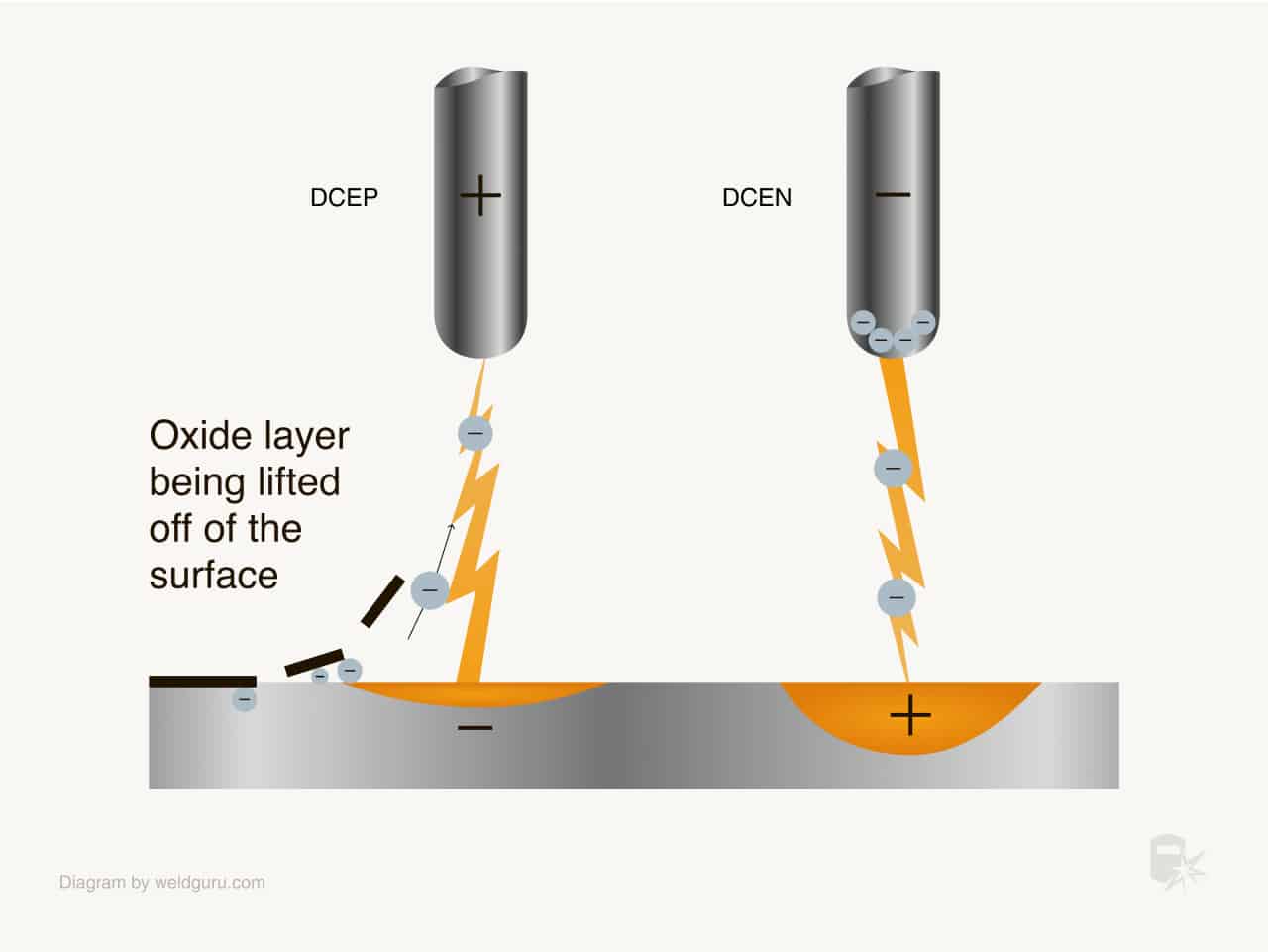
© weldguru.com – Image usage rights
So, DCEN plays a critical role in penetrating the aluminum underneath the oxides after the DCEP cleans the surface. AC TIG employs both electrode positive and electrode negative by switching the polarity many times per second.
The TIG AC welding frequency can be preset at 50-60Hz or range from 20 to 500Hz if the welder controls allow the frequency to be set by the user.
Related: Recommended AC/DC TIG Welders
AC vs. DC MIG Welding (GMAW)
The MIG welding process requires DCEP polarity, just like stick welding. It is impossible to use DCEN to MIG weld because the welds will be globby, and the arc will be horrible.
And before you ask…
MIG welding aluminum also requires DCEN. So, there is no change in polarity regardless of the welding material when using the MIG process.
AC MIG welding is used in industrial processes like cold metal transfer welding and AC aluminum pulse. But these shouldn’t concern you unless you are a welding engineer working on enhancing automatic welding productivity.
AC vs. DC Flux-Cored Welding (FCAW)
Gasless or self-shielded flux-cored wires require a DCEN polarity. So, for typical FCAW welding jobs, you have to switch polarity if using a MIG welder.
However, gas-shielded flux-cored wires need the same polarity as the MIG welding process (i.e., DCEP).
AC Vs. DC Pros & Cons
AC Advantages
- AC allows us to weld aluminum and magnesium with a TIG welding process thanks to the DCEP phase of the alternating current.
- Unlike DC, AC doesn’t experience a voltage drop when using long leads. Both TIG and stick welding benefit from AC when using long leads to weld far away from the power source.
- AC stick welding machines are cheaper, but they are rarely available nowadays.
- Some stick welding electrodes perform the best using AC. So, using AC makes sense only if these special electrodes are available.
- AC output creates a more stable arc when welding metals prone to magnetic fields by preventing arc blow and arc deflection.
AC Disadvantages
- AC creates more spatter and a less stable electric arc when welding mild steel and stainless steel.
- Stick welding quality doesn’t match welds made with DC output.
- AC TIG welders are significantly more expensive than DC TIG welding machines.
DC Advantages
- DC output provides a significantly more stable arc when stick welding compared to AC.
- Weld shape is more uniform.
- SMAW arc is easier to control, which helps direct molten filler metal better.
- Produces less spatter.
- DCEP offers excellent penetration when stick welding.
- DCEN provides faster filler metal deposition rates when stick welding. But, since the penetration is reduced, DCEN is best used with thin sheet metal.
DC Disadvantages
- It’s challenging to weld magnetized metal due to arc blow and deflection.
- DC TIG and SMAW can’t weld metals like aluminum.
- DC equipment is more expensive. But, since DC welders became widely available, this is no longer a pronounced issue.
Where are AC and DC Welding Used?
AC welding is best suited when TIG welding aluminum or if the welded metal is magnetized. DC welding is preferred for everything else.
However, we made the table below to provide a quick reference chart.
| Common DC Welding Applications | Common AC Welding Applications |
|---|---|
| DC TIG, Stick, MIG, and Flux-cored processes | AC TIG and Stick welding processes only |
| Welds mild steel, stainless steel, cast iron, titanium, copper, brass, bronze, nickel, and many other metals | SMAW: low carbon steel, stainless steel. AC TIG: aluminum and magnesium |
| Non-magnetized metals | Non-magnetized and magnetized metal |
| Welding near the power source | Welding far away from the power source |
Wrapping It
DC output is an all-around better choice for welding, except for aluminum. But, certain applications require using an AC output, too. So, professional welders like to have both options available.
Some high-quality TIG/Stick multi-process welding machines allow you to choose between AC and DC outputs for both processes, not just for TIG.
The DC polarities can get confusing at first. But, with some experience, you’ll learn the differences between DCEN and DCEP by heart and it will become second nature.
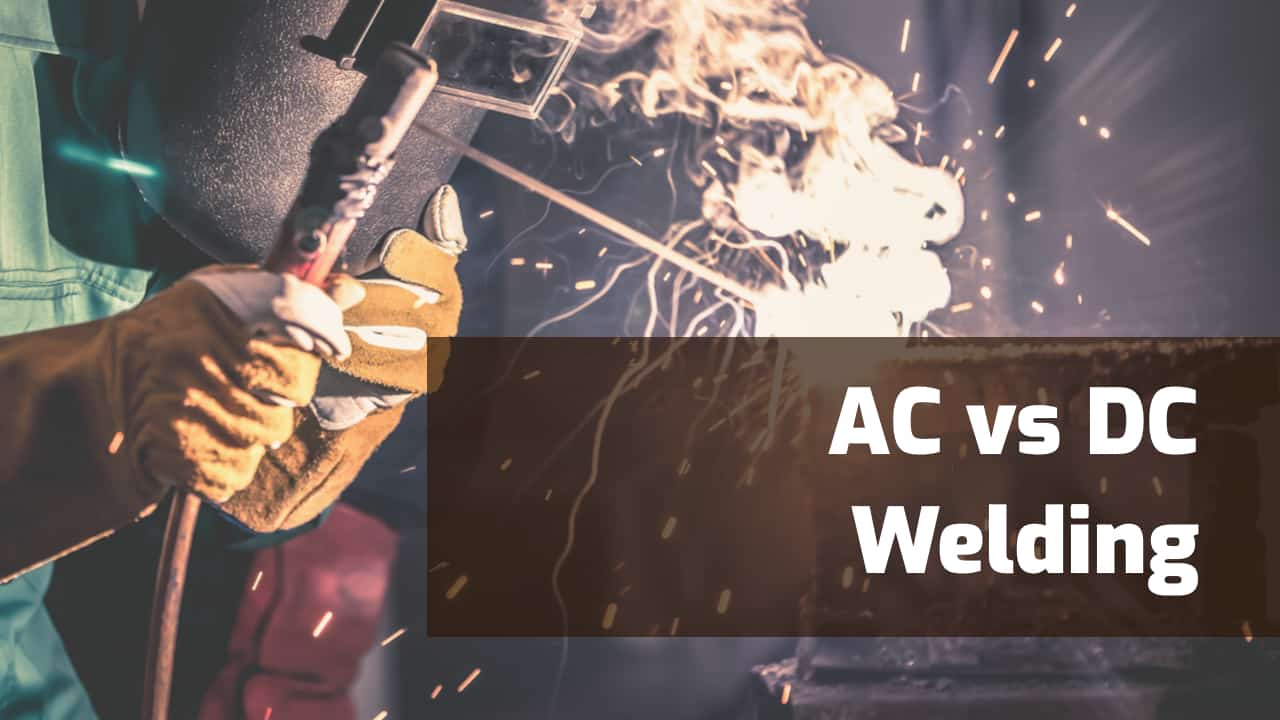
Hi Jeff, I am totally new to the welding scene. In fact I have not yet purchased a machine and would appreciate your advice on that subject.
I have spent several years in home construction and maintenance. In that arena I usually used wood not metal but in retirement I have recently found a desire to do learn about welding-not as a profession but to use in my home shop.
In reading about welding I noticed most welding processes involve gas except the flux core process. I believe I would like to start with the flux core process but would prefer to buy a machine that can also use gas should I choose to go that route later.
I have looked at the Yeswelder MIG-205DS. Would appreciate your thoughts on this machine or any other you might recommend. Thanks…Mike
Hey Mike – I would definitely opt for a MIG welder that has FC capability at a minimum, that way you can use/try both. Flux core will always be useful if you’re doing work outside as it’s better suited to windy conditions.
The Yeswelder MIG-205DS is a good choice for a beginner as it has these processes, plus the ability to stick and lift TIG if you wanted to try that too.